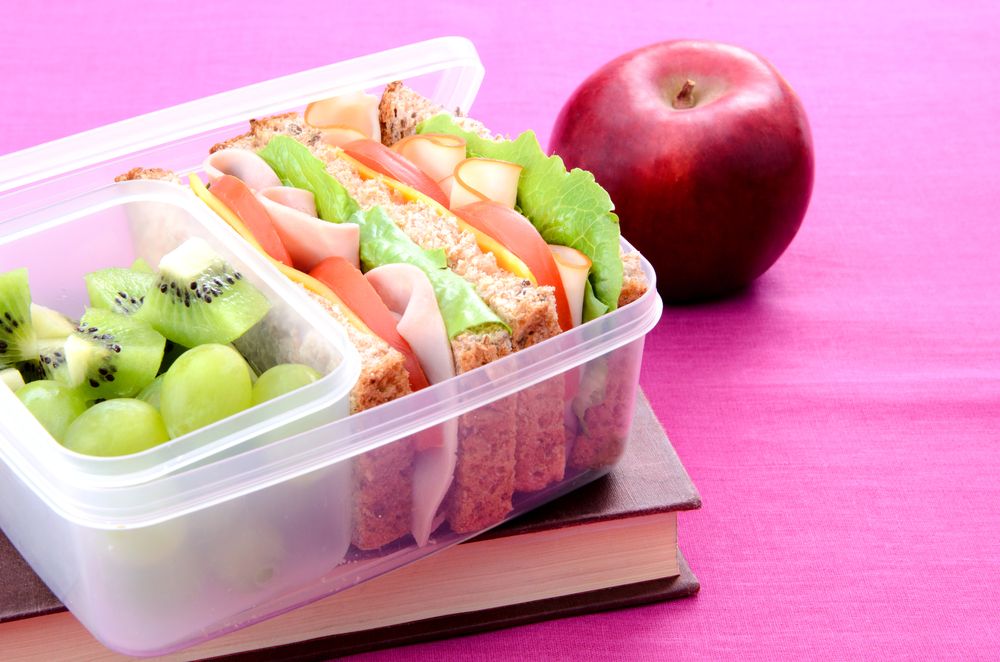How to assemble a healthy lunch box
Published on Wednesday, 15 May 2019
Last updated on Tuesday, 31 December 2019

Good food is essential for the healthy growth and development of young children. Toddlers and preschoolers can be a picky bunch so it's important to get nutritious meals into them.
To freshen up your child's diet and focus on the right foods, here is some guidance around healthy eating and what a well-balanced lunch box looks like.
What should young children eat each day?
Small children have small tummies and don't eat grown-up sized portions. They do need a balanced diet consisting of the five main food groups:
- Vegetables
- Fruit
- Breads and cereals
- Dairy
- Protein, e.g. lean meats and fish, eggs, tofu, nuts and seeds
As a guide, children aged between two and five should be eating at least two servings of vegetables and two servings of fruit per day, with this number increasing to least three servings of vegetables and two of fruit when they turn five. Variety is the spice of life, so encourage them to eat different colours and types, from green peas to orange oranges.
Wholegrain breads and cereals and low-fat dairy are better than the highly refined and full-fat versions, and instead of hydrating children with sugary juices and cordials, give them water and reduced-fat milk (once they're two and over).
While it's tempting to treat children to lots of 'discretionary foods,' like choc-chip muesli bars, sweet muffins and potato chips, these should be a 'sometimes' option, offered in small quantities. Healthy snacks, like fresh fruit, plain popcorn and small tubs of low-fat yoghurt are much better for them – both in the short and long-term.
What are some suggestions for a healthy lunch box?
Young children are busy learning, developing and being active, and a healthy lunch box has a positive effect on their current growth and future potential.
To pack in the flavour and goodness they need, focus on making healthy choices like choosing unprocessed chicken or tuna over processed ham, and finding the right balance between food groups.
As an example, Telethon Kids Dietitian Sarah Whalan says a healthier lunch box could include:
- A wholemeal chicken sandwich
- Some apple
- Carrot and cucumber sticks
- A small tub of low-fat yoghurt
- Water to drink
Fruit can be cut up into bite-sized pieces, vegetables may be raw and/or cooked (e.g. celery sticks and steamed broccoli) and wholegrain crackers make a nice little snack too.
How can families set a healthy example for children?
Back at home, it's important that you eat together as a family, where possible, and provide a wide variety of healthy foods that are eaten at set meal times and snack times, rather than continually 'grazed' on. Start each day with a good breakfast and finish with a wholesome homemade dinner, instead of regular takeaways or processed frozen meals.
Children learn by example, so it's important they see parents eating well, are encouraged to try new foods and are involved in food preparation from an early age such as by tossing the salad or helping to choose stir fry ingredients.
What is the Confident and Understanding Parents (CUPs) approach?
For numerous Australian families, the CUPs approach has been successful in promoting healthy eating and active play for zero to five-year-olds.
This approach involves health and early childhood professionals working with families, particularly with those 'at risk of vulnerability' to educate them about healthy choices, provide helpful strategies and build confidence.
The Centre for Community Child Health says that, 'When children develop healthy eating and physical activity habits in their early years, they have a greater chance of realising their full potential – today and for life.' In practice, the CUPs approach has resulted in:
- Children trying new foods and eating a 'rainbow' of fruit and veg
- Parents being empowered to feed their child well
- Children sleeping better, thanks to increased activity and reduced screen time
- Families enjoying meal times together and talking about healthy eating
Overall, we are what we eat, and a nutritious, well-balanced diet contains many of the ingredients that children need to grow, develop and thrive. Swap out highly sweetened, processed and fatty foods in favour of healthy alternatives, and your little one will reap big rewards.
References
Telethon Kids
Ministry of Health
HealthEd: Eating for Healthy Children Aged 2 to 12/Ngā Kai Tōtika mō te Hunga Kōhungahunga
Recipe Inspiration
HealthyKids: Eat Well, Get Active
HealthyKids: My Family Recipes
Related Articles

Keeping Your Child Healthy in Child Care
Child care services and illness go hand-in-hand, this article offers pointers to help parents keep their child healthy and prevent the spread of germs.

Nutrition and Children in Child Care
Nutrition is an important factor when choosing an early childhood service, this article offers suggestions on what to look out for.

The Active Play Guidelines for young children
It's important for babies, toddlers and preschoolers to be busy, but the big question is - how active and how rested should under-fives be?
